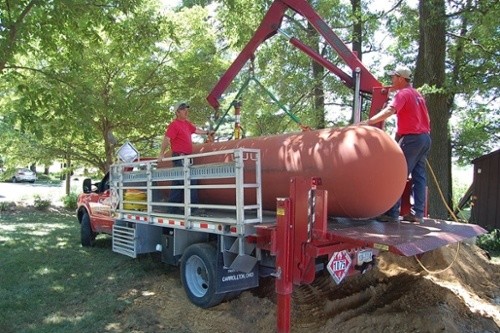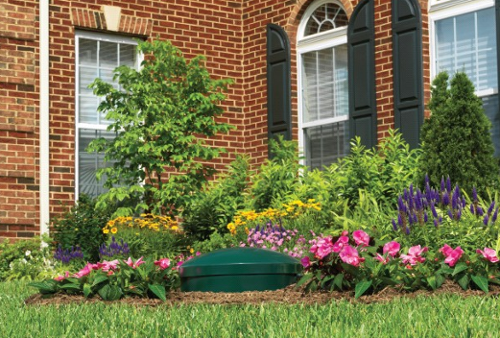Underground propane tank installations offer an out-of-sight, out-of-mind solution for your propane tank. But many homeowners ask this question when they’re thinking about an installation:
What will happen to my yard?
Here is what you can expect during underground propane tank installation:
Step 1: Finding a safe place for the underground tank
The first step is for the propane company to determine the best place in your yard to place your tank. There are several safety parameters that dictate where an underground tank can go:
- Distance from the house (at least 10 feet from your home)
- Distance from any property lines (at least 10 feet away from the perimeter)
- Underground gas lines (safe route to the tank)
- Potential ignition sources (electric appliances like your A/C unit)
- Absence of trees and tree roots

Once the providers find the right spot, they are ready to pull the propane tank up to the excavation spot
Step 2: Digging the hole
The size of the hole in your yard depends on the size of the tank you choose. Here are the hole dimensions for each underground tank option:
1000 gallon tank hole: 17 foot long – 4 foot wide – 5 deep

Step 3: Fill the hole with smooth soil
Your propane provider will fill in the hole with their own smooth soil, which is sometimes mixed with sand. This will fill in the large trench in your yard, but it won’t get rid of the large brown patch of dirt.
Step 4: Grow back your grass
Following your underground tank burial, it’s up to you to fill in the patch of missing lawn. If you get the installation scheduled at a good time of year, like the spring time, you’ll have ample time to plant grass seed or sod, or even landscape, over top of the dirt patch to cover it up.

How often will this happen to my yard?
Your lawn will only need to be dug up during the actual installation of your underground propane tank, unless you want to switch propane providers. In that case, the tank goes with them, and your yard will have to be excavated to replace the old tank. Make sure you schedule the tank swap with your former and new provider on the same day, that way a trench won’t sit in your yard for long.
But, if you don’t switch propane services, your tank will be there to stay for quite a while because when they install the tank, they’ll line it with sacrificial nodes. The sacrificial nodes protect the propane tank from corrosive electrical currents underneath the ground and will alert your provider if there’s a problem.
When it comes to your underground propane tank installation, don’t fear any damage to your yard. With a reliable propane gas provider, the process should be smooth and efficient.


